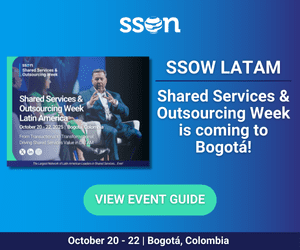Residents of Colombia’s Bajo Cauca Caught in Crossfire as Petro’s “Total Peace” Ignored
Near the banks of the Nechí River — one of the main hubs of illegal gold mining in northern Colombia — Javier*, a community leader with a steady, forceful voice, described to InSight Crime the hardships brought by the latest wave of conflict in El Bagre, a municipality in the Bajo Cauca subregion of Antioquia.
“Just a few months ago, the fighting was so intense that no one dared retrieve the dead,” said Javier, who spoke with InSight Crime at the end of 2024. “At one point, animals were eating the corpses,” he added, lowering his voice.
Over the last 20 years, Javier has seen how a conflict once rooted in ideology — between guerrillas and paramilitaries — has transformed into a battle over coca crops, drug trafficking corridors, and gold deposits.
Today, a resurgence of violence has been sparked by clashes between Colombia’s three main criminal actors: the National Liberation Army (Ejército de Liberación Nacional – ELN), the country’s last remaining insurgency; the Gaitanist Self-Defense Forces of Colombia (Autodefensas Gaitanistas de Colombia – AGC); and dissidents of the now-defunct Revolutionary Armed Forces of Colombia (Fuerzas Armadas Revolucionarias de Colombia – FARC), known as the ex-FARC mafia—both products of past demobilization efforts.
“The FARC and ELN say, ‘Leave, or we’ll kill you.’ The AGC says, ‘If you leave, we’ll kill you,’” said Javier. “The communities are left with no way out.”
All three groups have sought talks with the Colombian government under the “Total Peace” plan, which aims to negotiate separately with the country’s illegal armed groups. However, this policy has done little to curb the territorial disputes unfolding in Bajo Cauca and throughout Colombia.

Fighting to Fill the Vacuum
Guerrilla-paramilitary clashes in Bajo Cauca date back to the late 1990s. But over the past two decades, these groups have evolved and become further criminalized. Attempts to demobilize their forces – first the 2006 demobilization of the paramilitaries of the United Self-Defense Forces of Colombia (Autodefensas Unidas de Colombia – AUC), then the 2016 peace deal with the FARC – led to new conflicts as splinter groups and rivals fought to fill the power vacuum and control the criminal economies left behind.
SEE ALSO: Colombia’s Peace Efforts Spark Criminal Disputes and Divisions
The latest escalation began when the AGC — the most powerful criminal group in Bajo Cauca — moved into the Serranía de San Lucas. Located in the south of the neighboring department of Bolívar, this mountain range is rich in gold deposits and coca crops and has long been an ELN stronghold. Homicides in El Bagre, which connects San Lucas with the Bajo Cauca, rose to 29 last year, up from 20 in 2023. But murders are just one element of the conflict, which has also led to mass displacements and the confinement of whole communities. Some 145 people were displaced to El Bagre in December 2024 following clashes. By early January 2025, that number had risen to 230.
Still, the violence continued. According to the UN Office for the Coordination of Humanitarian Affairs (OCHA), 395 people were forcibly displaced in Montecristo, southern Bolívar, on February 7, while another 144 were confined to their homes by the fighting. On February 18, 26 people were displaced from Segovia, which borders El Bagre to the south, due to fighting between the ELN and the AGC.
“What we’re seeing now is the AGC gaining ground against the ELN,” Javier said.
To defend its turf, the ELN has allied with the 18th and 36th Fronts of the Central General Staff (Estado Mayor de los Bloques y Frente – EMBF).
“The ELN’s alliance with the FARC dissidents is what’s stopped the AGC from advancing in the Serranía de San Lucas,” he added.
Local police told InSight Crime that another group, known as “Los de Abajo” or “Los de Cuturrú” — a remnant of longtime AGC rivals the “Caparros” — also appears to have joined the alliance.
What’s at Stake in Bajo Cauca?
The conflict is driven by a fight for control of a region brimming with criminal opportunities. The area contains over 8,000 hectares of coca crops and vast gold reserves. Between January and September 2024, 11.64 metric tons of gold were extracted from the subregion, accounting for 54% of all gold mined in Antioquia and 41% of Colombia’s total.
Both the AGC and the ELN profit from mining by charging fees for moving machinery and supplies, extorting legal and illegal miners, and taking a cut of gold production or fixed fees per mine.
SEE ALSO: Major Criminal Powers Dispute Key Corridors in Colombia
Bajo Cauca is also a strategic point on Colombia’s criminal map, connecting coca-producing zones in the east and north with drug dispatch points on the Pacific and Caribbean coasts. Controlling this corridor guarantees illicit revenue flows.
But beyond the economic value, groups with deep roots in the region, such as the ELN, are clinging violently to their turf.
“This is about ego. One group wants to take over, the other says, ‘You’re not pushing me out,’” said a humanitarian worker based in Bajo Cauca who asked not to be identified as they had not been authorized to speak publicly.
Bajo Cauca’s Expanding Battle Lines
While violence is concentrated on the border with southern Bolívar, tensions are rising elsewhere in the region. In Cáceres, a municipality in central-western Bajo Cauca, authorities reported the forced displacement of several families in December 2024 due to clashes in San Pablo, a key mining hub.
The AGC has established a permanent presence in San Pablo, where it has battled both the Colombian army and the ELN. In December 2024, four AGC members were killed in an airstrike in the area.
In neighboring Tarazá, in western Bajo Cauca, social leaders, civil society members, and local officials told InSight Crime that tensions are flaring in various hamlets historically used for coca cultivation and cocaine production. The sources warned that violence is likely to worsen in the coming months.
“What’s next? The same as always: massacres, displacement, threats, forced disappearances,” said a public official in Tarazá, who requested anonymity for fear of reprisals.
In early March, the ELN detonated an explosive device on the road linking Tarazá and Medellín, the capital of Antioquia. In December 2024, the group attacked a public transport vehicle on the same route, injuring two people.
The deteriorating security is reflected in homicide statistics: Cáceres recorded 34 murders in 2024, up from 18 in 2023; Tarazá saw 29 homicides, compared to 12 the year before, according to National Police data. Yet killings are only one metric — communities are also suffering from a range of abuses that underscore the grip these groups have over daily life.
The Mechanics of Social Control
As criminal clashes have intensified in Bajo Cauca, so has the pressure on civilians. Each group uses fear and violence to enforce rules, assert control, and project authority.
“The AGC is using the same tactics the FARC used — like laying landmines,” said Javier.
The now-defunct FARC was notorious for mining territory to slow the army’s advance and protect coca fields. While the practice declined after the FARC’s 2016 demobilization, the AGC appears to be reviving it in areas like Cáceres and El Bagre to keep guerrilla rivals out. Mines are often placed along footpaths, trapping rural communities.
The AGC has also imposed rules and distributed behavior manuals, mandating curfews and punishing rule-breakers. The group has confined entire communities during clashes with rivals.
The civilian population has been caught between the competing demands of armed groups. One group demands displacement; another forbids it. Some communities have taken a stand.
“People were displaced for about 15 days. When they came back, they reopened their businesses and agreed to resist the groups,” said Javier. “They told them, ‘Your fight is your problem. Go kill each other — but let us work.’”
However, while Javier and other residents of Bajo Cauca seek to break the cycles of violence they have suffered for generations, the profits on offer from mining and drug trafficking mean armed groups will continue to fight over the territory, and violence will remain their main tool to assert their power.
*Name changed to protect identity.
This article, written by and , was originally published by InSight Crime, a Medellín-based foundation dedicated to the investigation and analysis of crime and security in Colombia and Latin America. It has been generously shared with Finance Colombia under a Creative Commons license.


























